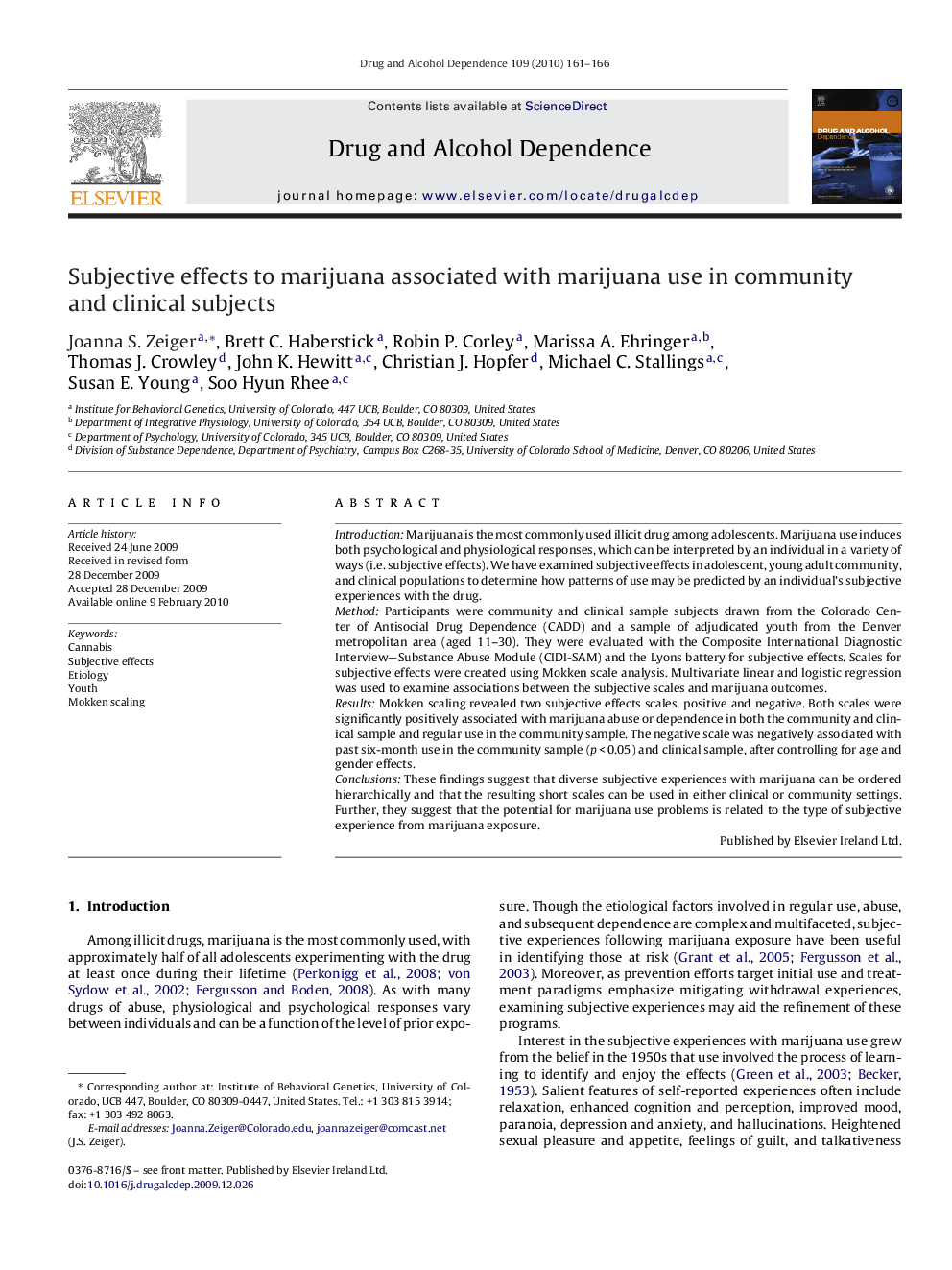| Article ID | Journal | Published Year | Pages | File Type |
|---|---|---|---|---|
| 1070775 | Drug and Alcohol Dependence | 2010 | 6 Pages |
IntroductionMarijuana is the most commonly used illicit drug among adolescents. Marijuana use induces both psychological and physiological responses, which can be interpreted by an individual in a variety of ways (i.e. subjective effects). We have examined subjective effects in adolescent, young adult community, and clinical populations to determine how patterns of use may be predicted by an individual's subjective experiences with the drug.MethodParticipants were community and clinical sample subjects drawn from the Colorado Center of Antisocial Drug Dependence (CADD) and a sample of adjudicated youth from the Denver metropolitan area (aged 11–30). They were evaluated with the Composite International Diagnostic Interview—Substance Abuse Module (CIDI-SAM) and the Lyons battery for subjective effects. Scales for subjective effects were created using Mokken scale analysis. Multivariate linear and logistic regression was used to examine associations between the subjective scales and marijuana outcomes.ResultsMokken scaling revealed two subjective effects scales, positive and negative. Both scales were significantly positively associated with marijuana abuse or dependence in both the community and clinical sample and regular use in the community sample. The negative scale was negatively associated with past six-month use in the community sample (p < 0.05) and clinical sample, after controlling for age and gender effects.ConclusionsThese findings suggest that diverse subjective experiences with marijuana can be ordered hierarchically and that the resulting short scales can be used in either clinical or community settings. Further, they suggest that the potential for marijuana use problems is related to the type of subjective experience from marijuana exposure.
